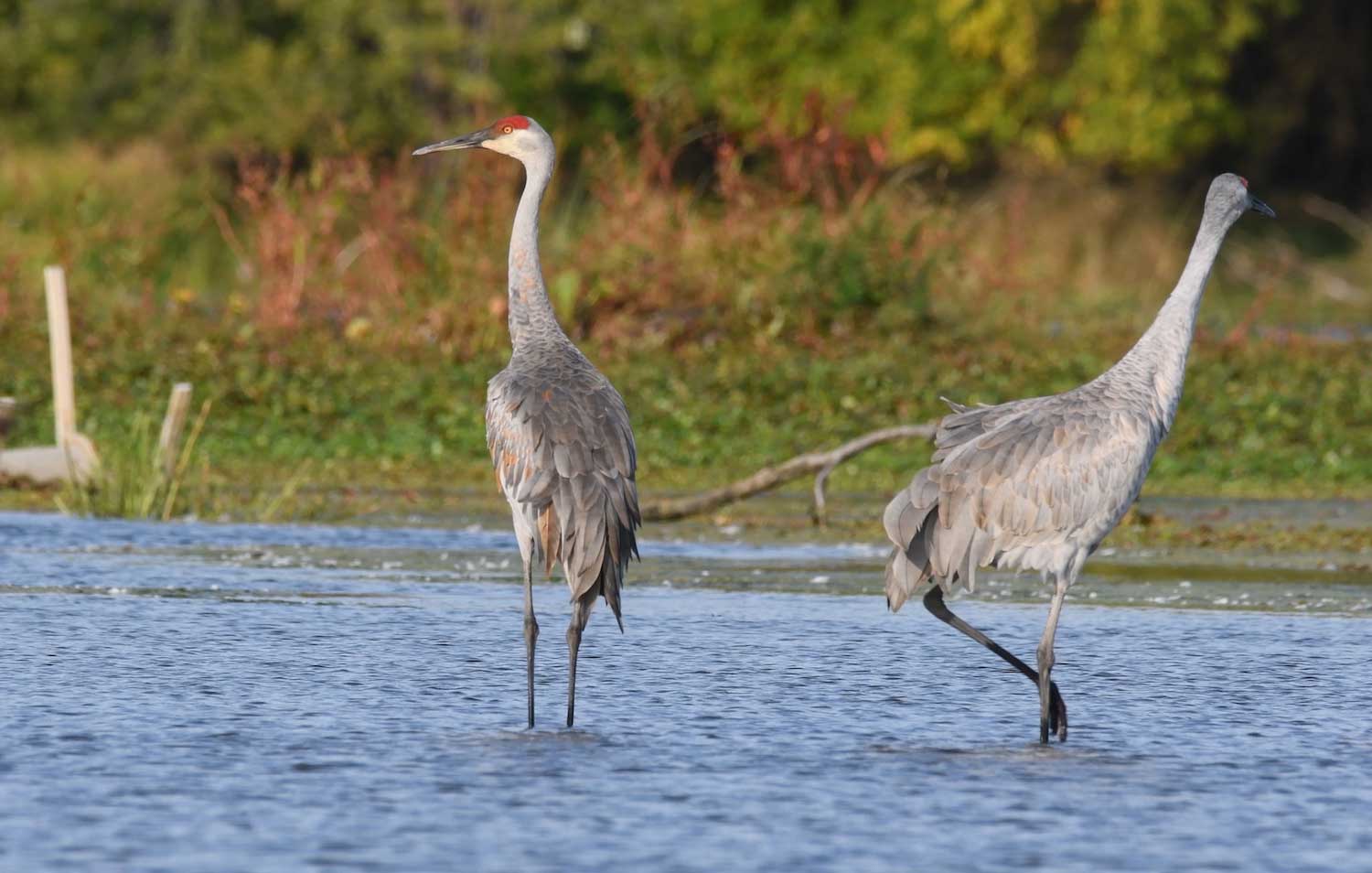Fall bird migration: Here's a look at who is winging their way south

There are many reasons to look forward to the changing seasons, and for many people the arrival of some of our most beloved birds is part of the seasonal anticipation each spring and fall.
The fanfare for arriving migrants in spring is typically more frenzied than in the fall, when we are generally less enthusiastic about the upcoming season and the weather it entails. But the trouble with birds — and wildlife in general — is that you can't exactly set your calendar by them.
We know generally what birds to expect in the area and when, but it's not an exact science. Even among groups of birds, there can be a lot of variation in migration timing among individual species.
That said, here's a look at some of our most beloved birds and when we can usually expect to see them in our area each spring and fall.
Hummingbirds
Ruby-throated hummingbirds are one of those birds we set the seasons by. They arrive in early spring each year then head out again as summer turns to fall.
The birds don't travel in groups, but individually. We typically see hummingbirds start to arrive in Will County the second or third week of April, and they begin to leave the area in August, adult males first followed by females and juveniles. By the beginning of October, hummingbirds have mostly left the area, although a few may still be preparing to depart or passing through from points farther north.
Both early and late in their migration seasons, hummingbird feeders are of increased importance to the tiny birds. In early spring and late summer and early fall, blooming flowers and insects can be scarce. During these times, nectar from feeders can serve as an important food source.
Pelicans
American white pelicans are another bird that we welcome with fanfare each year, but these large birds are here for just a brief time each spring and fall. Some of our local waterways are a regular stopover point for the pelicans as they migrate from their southern wintering grounds to their northern breeding grounds each spring and then make the return trip each fall.
They typically arrive in Will County in early September and stick around until sometime in November. Late September and early October are usually the peak period for pelicans in the fall. In the spring, we usually start seeing them sometime in March or early April, and they'll stick around until sometime in May.
Local waterways where pelicans are commonly seen each spring and fall include the waters around McKinley Woods, Rock Run Rookery Preserve and Lake Renwick Preserve. The pelicans that pass through our area winter near the Atlantic coast and Gulf of Mexico and breed at a few select sites in Canada and the north central United States.
Cranes
Sandhill cranes are noisy migrants, so we often hear large flocks of these birds passing overhead long before we see them. On busy migration days, it's not unusual to see or hear thousands of the birds passing by in large flocks. Spring migration for the cranes usually brings them through our area beginning in early March. The peak migration period in the fall is typically late November.
The cranes use thermals and wind currents to aid their journey and allow them to expend less energy in flight. They fly in a V formation like we see with Canada geese, but their flocks can look a bit disorganized and sloppy because they are trying to catch a thermal to lift them to a higher elevation.
Some sandhill cranes breed and nest in our area, but we mainly see them locally as they pass back and forth between their breeding grounds in Wisconsin, Michigan and Minnesota and their wintering grounds in Florida and Georgia.
Warblers
Warblers are another group of birds that signal spring, with many birders enthusiastic about their arrival in our forests and woodlands each year. We see these each fall too. A few warbler species nest in northern Illinois, but most are just passers-by on their way to their breeding grounds in the far northern United States and Canada, according to the Chicago Botanic Garden.
In the spring, warblers typically begin to arrive locally at the end of April or beginning of May. September is usually the peak period for their return trip south, with most warblers having passed through our area by October.
The spring warbler season is an exciting time for avid birders as they seek out the birds, trying to identify them by their often colorful plumage and sweet songs. In fall, however, many warblers are more drab in appearance and sing far less often, making it more difficult to distinguish between the various species.
Dark-eyed juncos
Juncos are migratory birds, but they are reverse migrants compared to many other birds. Instead of leaving Illinois and heading south for winter, these birds will soon be making their way to our area, arriving here from the boreal forests in the northern United States and Canada, according to the Chicago Botanic Garden.
Many people think of dark-eyed juncos as a sign that winter is coming, but they can actually start arriving in our area as early as August, sticking around until about February or early March. During their winter stay-over, they are a common sight in backyards and beyond, often seen foraging along the ground for seeds and other foods.
Dark-eyed juncos are our most famous so-called snowbird — birds that only spend winters in Illinois — but they aren't the only one. Others include American tree sparrows, white-throated sparrows and purple finches as well as waterfowl species like ruddy ducks and common mergansers.
